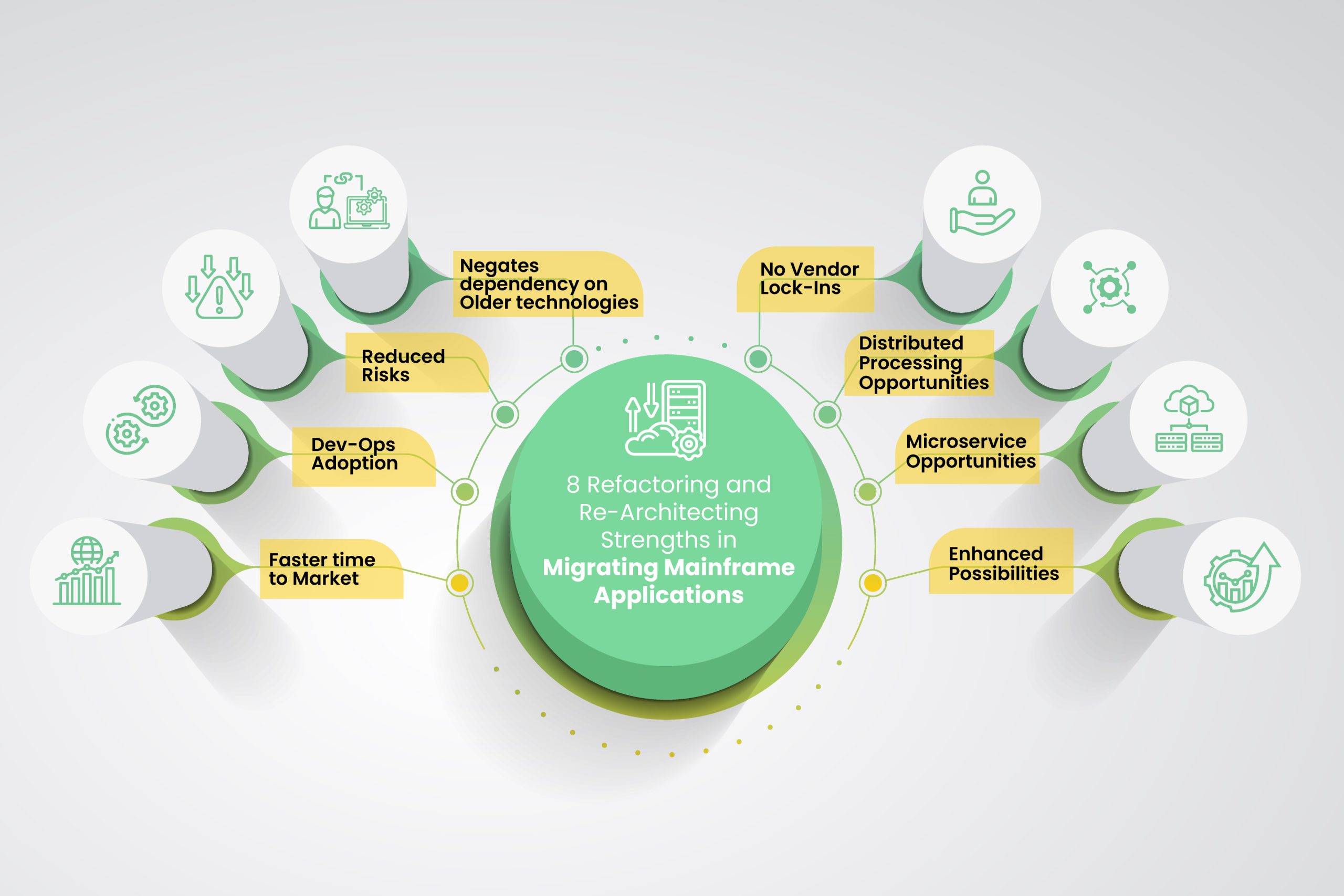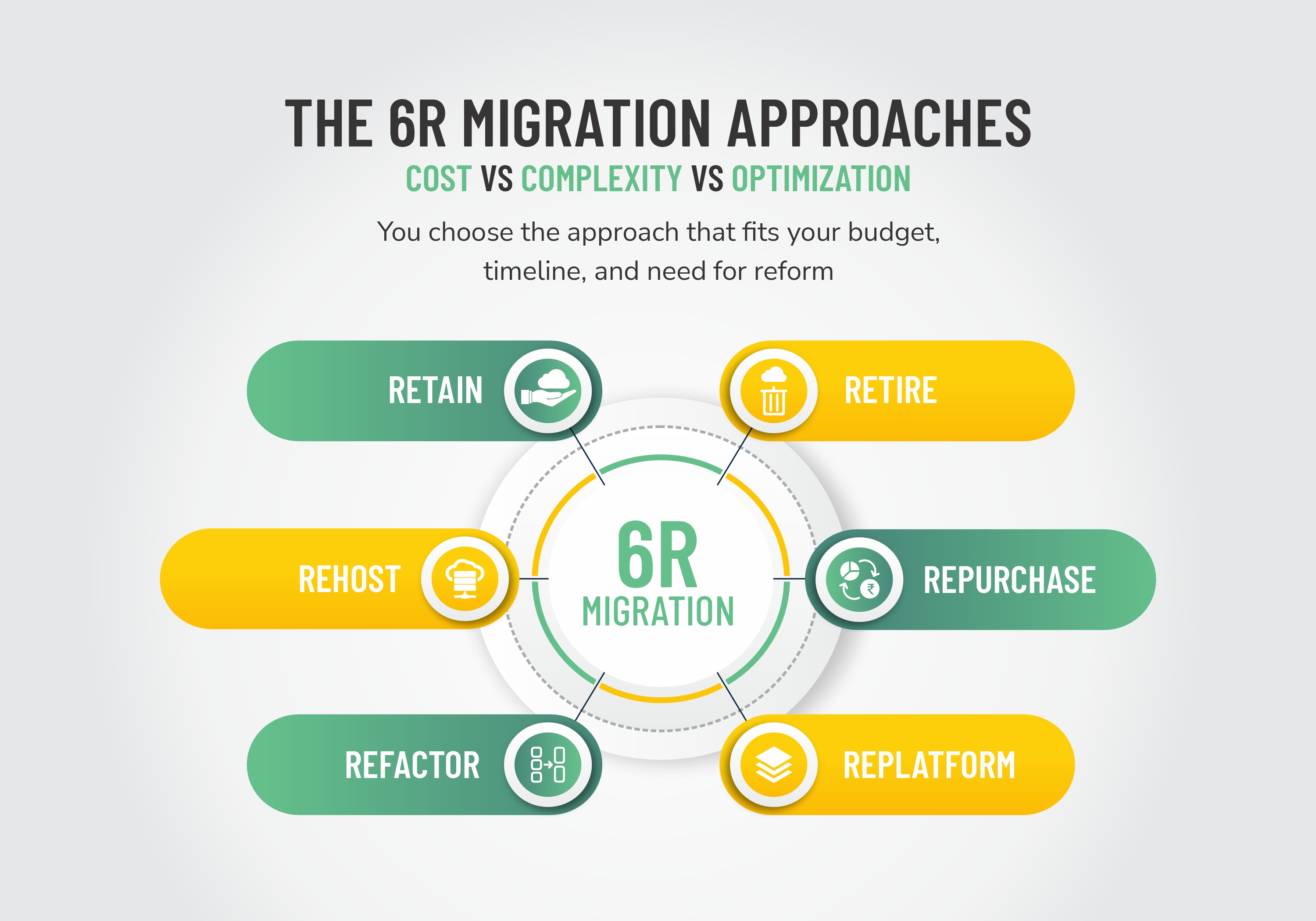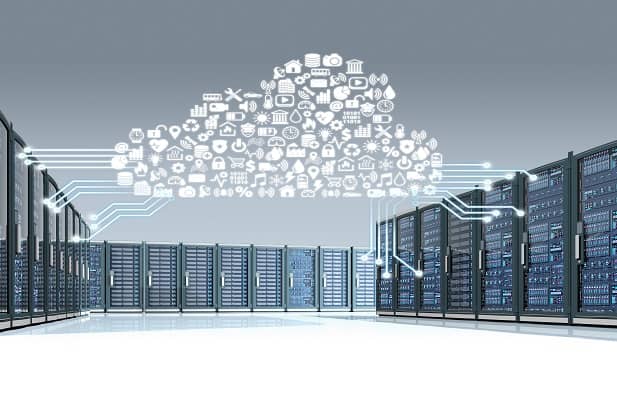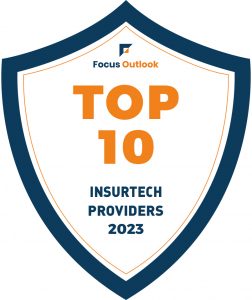As enterprises increasingly move their mainframe applications to the cloud, thinking about how your business will perform a successful mainframe migration, especially if you have an application in production with significant numbers of users, should be top of mind.
Even though you can attempt to migrate your mainframe application directly, legacy systems often require adjustments such as refactoring, re-architecting, or even rewriting your application in order to ensure solid and stable performance on your new cloud server.
We’re going to discuss why the refactoring and re-architecting approach is an excellent method for migrating your mainframe application and why your business should consider hiring professional migration specialists, such as those at Kumaran, to guide you through the process from start to finish.
Rather than risking excessive downtime on your production applications, an experienced mainframe migration team will be able to complete the refactoring and re-architecting process, perform all of the required testing and verification necessary to ensure smooth operations and only then point users towards your brand new migrated app. When you perform a mainframe migration properly, your end-users shouldn’t experience any downtime or service interruptions.
Let’s dive into how these types of mainframe migrations are done.

Table of Contents
Benefits of refactoring and re-architecting in migrating mainframe applications
1. Removes dependency on older technologies
One of the biggest challenges when migrating legacy applications to the cloud or even a new updated server is their string of dependencies on old technologies, systems, and application programming interfaces (APIs).
The refactoring and re-architecting mainframe migration process removes dependencies on old technology and replaces them with equivalent libraries and APIs that will work even better, and likely perform faster, than your previous legacy systems performed.
2. Reduces risk when compared to completely rewriting applications
When considering mainframe migration for your application, you typically have three pathways to choose from:
- Attempting to migrate the app directly to your new server
- Taking the refactoring and re-architecting approach, only changing what needs to be updated and leaving the core of your application alone
- Completely rewriting your application from scratch and launching it on your new server(s)
The second approach, where you refactor and re-architect your application to support solid performance on your new server, is one of the best methods to take if you’re aiming to reduce risk.
Although it may seem that completely rewriting your application is a great way forward where you’ll receive a shiny, brand-new application upon completion of the development process, you must keep several significant risks in mind.
Some of the major risks associated with completely rewriting your application include:
- Your developers don’t understand your design intent completely, change the way your application operates, or fail to include critical features.
- Schedule delays and lapses in communication with your development team
- New bugs being introduced due to brand new code being written, increasing downtime risk and direct impacts on your end users
These risks should be considered and weighed against a refactoring and re-architecting approach. While getting a brand-new application may seem ideal when you first hear the option, it might significantly impact your users and affect customer satisfaction, especially if your business is forced to fix bugs for weeks or months after your mainframe migration.
3. Allows for DevOps implementation through a refactoring and re-architecting approach
Implementing DevOps into the re-architecting and refactoring of your application can result in higher-quality, faster, and more reliable software than you started with. With this approach, you’ll be able to take advantage of all the benefits of rewriting and updating certain pieces of your mainframe application without the risks involved with starting a brand-new software development project from scratch.
4. Faster time to market with automated migration
When your company agrees to have your mainframe application undergo a full refactoring and re-architecting phase to fully migrate it to a new server or the cloud, you’ll be able to implement automated migration features that’ll make moving your application significantly faster in the future.
Even though there is some work involved the first time mainframe migration is done, you’ll receive an application that’s robust, high-performing, reliable, and able to flawlessly support new systems and modern servers with ease. If you ever need to perform migrations in the future or duplicate your existing application onto new servers or mainframe systems, automated migration will make your life significantly easier in the long run.
5. Avoids vendor lock-ins
Depending on the legacy systems, libraries, or frameworks on which your initial mainframe migration application was built, you may have experienced the frustration of being locked into a vendor that no longer offers support or doesn’t meet your current business requirements.
Fortunately, when you get your mainframe application completely refactored and re-architected to support brand new systems and updated libraries and frameworks, you’ll be able to easily replace any legacy libraries that had you “locked” into a specific vendor without worrying about breaking anything within your app.
This approach gives your organization the best of both worlds, being able to escape vendor locks without having to entirely rewrite your entire application from scratch, saving both time and money!
6. Cloud offers a distributed processing architecture that handles large data volumes at scale
Does your legacy mainframe application have performance-improvement features such as a distributed processing architecture? If the application hasn’t been updated in years or decades, chances are the existing app’s capabilities could be a bottleneck.
During the refactoring and re-architecting process, the mainframe migration specialists at Kumaran will be able to implement a distributed processing architecture, allowing your application to handle large data volumes and increased numbers of users without any difficulty or performance hits.
7. Allows for microservices
Legacy application systems were often built for one single purpose, without any additional thought being put into microservices or modular additions. You could never add features or functionality to your existing application without a significant overhaul or complete rewrite, something that’s often out of budget if the need is not urgent or critical.
Fortunately, migrating your mainframe application through a re-architecting and refactoring process will allow you to implement microservices and improve your app on the fly as you activate and deactivate the specific microservices you need. This ultimately makes your application much more flexible and modular, giving you the ability to do more without having to alter the underlying code of your app every few months or years.
8. More Reliant and enhanced cloud migration than other 6R options
When it comes to mainframe migration, the refactoring and re-architecting approach to cloud migration is much more reliant and provides enhanced cloud capabilities than other 6R options.

To refresh your memory, the 6R’s are:
- Rehosting
- Re-platforming
- Repurchasing
- Refactoring and Re-architecting
- Retiring
- Retaining
We are strong advocates for using the fourth option in your mainframe migration since it is simply several levels above the rest when it comes to ensuring a smooth migration without impacting your users or introducing additional bugs and long-term issues.
In mainframe migration, particularly the process of rehosting is often not an easy option, especially if your technology is outdated and your application doesn’t support any of the new technologies available today.
Re-platforming is a slightly better option, but if none of the destination platforms you choose support some of your legacy systems, libraries, or APIs, then this doesn’t pass the test for being a viable solution.
You can choose the repurchasing migration option if there is a third-party application that has all the features you need, but if your app is custom-built for your company, you’ll be hard-pressed to find an exact duplicate that isn’t painful or a major hassle to migrate to.
Retiring your mainframe migration application is out of the question, as we assume your business still wants an operational app for end-users and retaining (doing nothing) is clearly not in the cards if you’re thinking about performing a migration.
When running through the 6Rs, it becomes clear that the best solution for mainframe migration is refactoring and re-architecting and that it is a way to perform a successful migration on all fronts without any of the hassles or inconveniences that are associated with alternative methods.



